#werner ii of habsburg
Photo



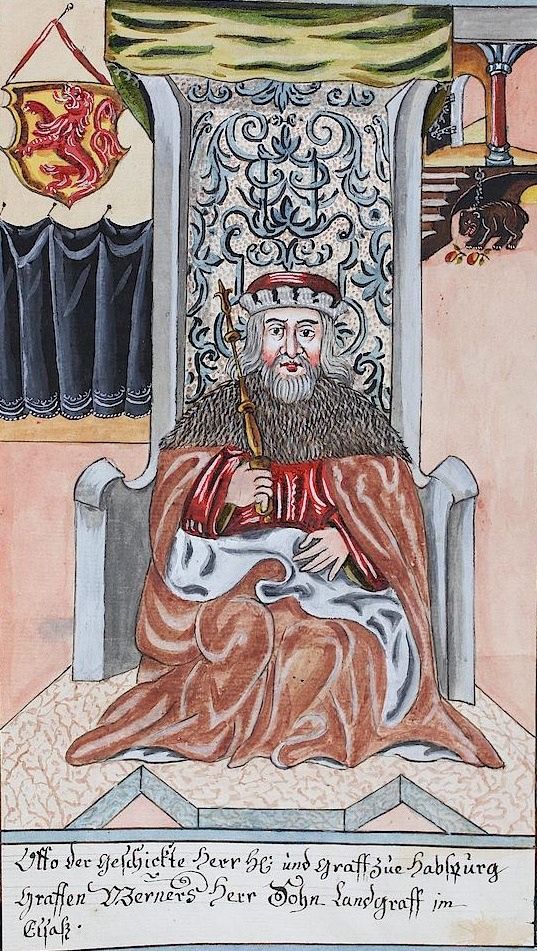


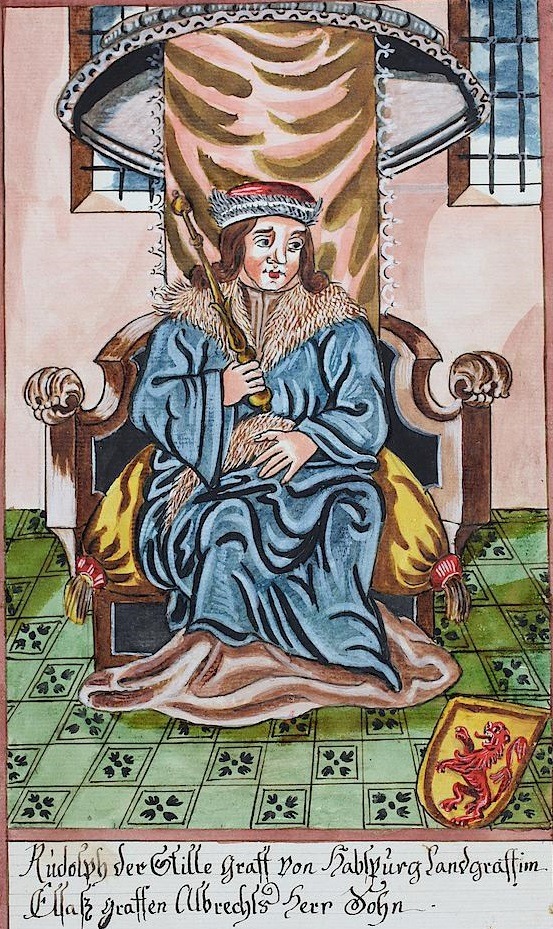
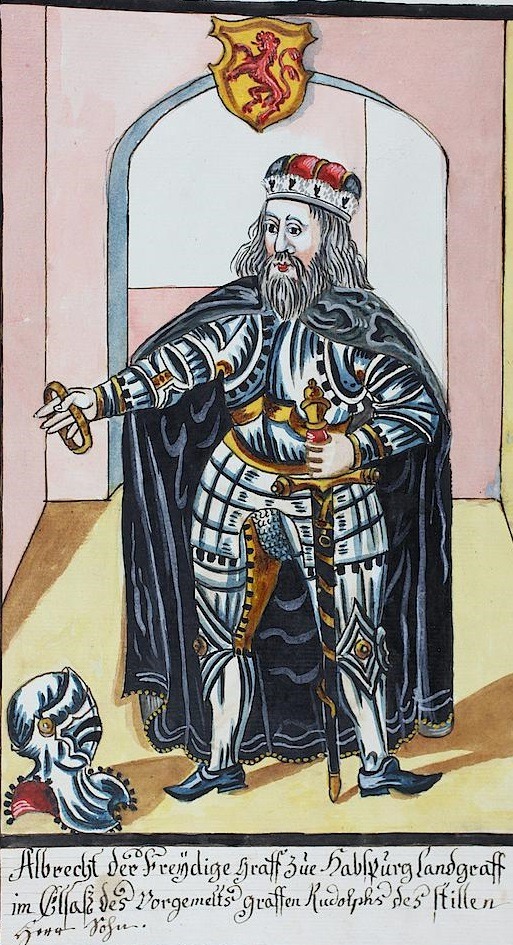
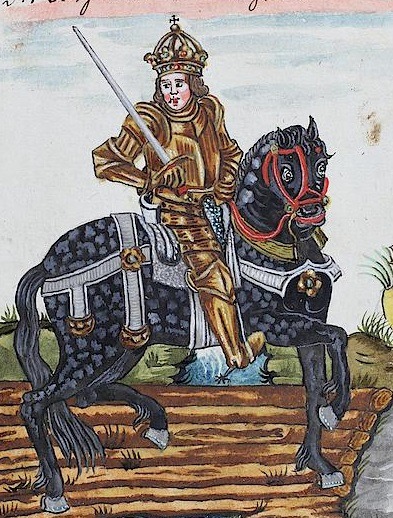
List of Monarchs: The House of Habsburg.
1. Guntram the Rich (920-973; the progenitor of the House of Habsburg and the House of Zähringen). Guntram possessed lands in Alsace and in Breisgau, from Vogesen to Kaiserstuhl and the Black Forest.
2. Radbot of Klettgau (c. 985 – 1045). He was Graf (Count) of the county of Klettgau. He built Habsburg Castle.
3. Werner I, Count of Klettgau (c. 1025/1030-1096). Sometimes called Werner the Pious. He had two sons: Otto II, and Albert II.
4. Otto II, Count of Habsburg (d. 1111). Graf (Count) of Habsburg and one of the founding members of the Habsburg family.
5. Werner II, Count of Habsburg (d.1167). He was the great-great-grandfather of King Rudolph I of Germany.
6. Albert III, Count of Habsburg (d. 1199; also known as Albert the Rich). Like his father, he was a loyal supporter of the Imperial House of Hohenstaufen.
7. Rudolf II, Count of Habsburg (Rudolph the Kind; d. 1232).
8. Albert IV, Count of Habsburg (Albert the Wise; 1188-1239). On the death of his father in 1232, he divided the family estate with his brother Rudolf III, retaining the ancestral seat of Habsburg Castle. A follower of Emperor Frederick II of Hohenstaufen, he took part in the Barons' Crusade of 1239 with King Theobald I of Navarre and died near Ashkelon.
9. Rudolf I of Germany (1218-1291).
#Chroniken der Habsburger der Zähringer und der Stadt Freiburg#german aristocracy#haus habsburg#house of habsburg#österreich#guntram the rich#rabdot of klettgau#list of monarchs#graf von habsburg#habsburg#herzogtum österreich#heiliges römisches reich#count of habsburg#House of Zähringen#Zähringer#full length portrait#werner of klettgau#otto ii of habsburg#werner ii of habsburg#albert iii of habsburg#rudolf ii of habsburg#albert iv of habsburg#in armour#full-length portrait
8 notes
·
View notes
Text
INCEST'S WEIRD MAINSTAY IN OPERAS - RARE OPERA CLUB, VOL. 14 - FRANK MARTIN'S LE VIN HERBE
I’m not going to talk too much about this piece specifically. It was hard to really discern it’s function and meaning from the version I watched. This version staged the piece like an opera, even though it’s an oratorio, with instructions from Frank Martin for it not to be staged. The english translation also gave it a very stagnant and obvious feeling about it. The chorus spent the whole time describing the action, which in an oratorio is fine but in this staged context was not successful.
Okay, I said I wasn’t going to write about the performance so NOW I WILL NOT.
The piece is a telling of the Tristan and Isolde myth. Made famous by the Wagner opera (funnily enough, this weeks video essay is about the legacy and work of Wagner) this tale of star-crossed, accidental incestual love is one that has been kind of creepily obsessed over by composers over the years. Wagner not only portrays it in Tristan and Isolde but this unsuspecting sibling love also forms the relationship of Siglinde and Sigmund in Act I of Die Walkure in the Ring Cycle. Olivier Messiaen talked about the myth being influential on his early large scale work Turangalila Symphony, along with other early large works forming an interconnected trilogy. Hans Werner Henze wrote in the 1970s a large work for piano and orchestra called Tristan. And of course Debussy’s opera Pellease and Melisande is a retelling of the French version of the myth. Now that I list these composers and works, some of my favourites, I realise this myth has also creeped into many pop and art pop songs too, including a song by Patrick Wolf called Tristan, an artist I wrote my honours thesis on. It has been popularised and pretty much fetishised by Game of Thrones and other medieval knock-offs. It’s an easy taboo to tap into - it generates extreme reactions, yet still step-parent and step-brother/sister porn is often rated as the most searched on the internet.
What is the appeal of this myth (and incest in general)? In this myth the couple meet and have an immediate connection and sexual tension. These feelings are strangely familiar and welcoming. They twist and turn throughout each version, usually resulting in an eruption of physical love. It’s then usually revealed, or discovered they are brother and sister and madness ensues. This depiction of physical love isn’t something that is unusual in music, and the added mystery of the unknown origins of these familiar feelings paint the differing interpretations with intriguing feelings of lust, longing and guilt. Many of these works capture this feeling and essence, and I think that is what the composers are probably most drawn to - trying to describe in music the mysterious attraction between these two.
However, a major taboo is still explored by major composers in major works, often on stage and often produced in times more conservative to our own. Perhaps there is a weird, twisted, almost Freudian working out of these sorts of sexual feelings by composers, especially with many of these works coming in before or on the cusp of women’s suffrage and the eventual sexual revolution. I explore sex a lot in my work, it’s one of the main motivators of my work. I am especially interested in finding humane and genuine depictions of homosexual and non-binary love and sex in my music, to try and broaden and diversify the depictions of sex in media. However, these school-boyish obsessions of incest and confused, guilt laden medieval bonking have always felt unauthentic to me. Pelleas and Melsande for instance - I adore this opera. I find the music intoxicating, and when done properly Melisande has this mystery and grace about her that’s really intriguing. However the sort of feminine ambivalence of her, the way she’s depicted by Debussy as a sort of forlorn, distant, mysterious femme fatale has more often than not got me wanting to yell at the singers on stage in frustration. “JUST MAKE A DECISION” or “JUST ASK HER WHAT SHE WANTS” or “JUST ASK WHO SHE IS. AND WHERE HAS SHE COME FROM” Often the women in these works are passive, and are usually won over by swash-buckling male bravado - he pulls a sword from a stone or a tree, or he kills his brothers, or finds a ring, or slays a bear and other such masculine, middle ages fare princes would get up to.
The inherent awkwardness of the love interest between these character always has me unconvinced. They always seem to be in love because of physical attraction and this “sense” of destiny. I think it would actually be more interesting to explore the political nature of men’s power over women in these times, rather then the old love at first site gag. One could argue it’s just an older style of story telling, and that this might be too revisionist and could end badly, but surely when Wagner or Debussy or Messiaen thought of reaching for these myths they would have in the back of their mind the fact these stories are kind of gross. Even for their time, they’re kind of yucky. Lindsay Ellis has some similar thought and discussions around the remake of Disney’s Beauty and Beast in this video, where she explores this idea of letting the myth be the myth, rather then to update the myth for our times.
Another example is Siglinde in Die Walkure - the tension of the first act is excellently done, but it’s always struct me as kind of awkward that she is literally living as a prisoner in this weird love triangle that somehow results in the phallic release of the sword from the tree and her running off with her brother. I can understand this sort of incest adoration in the 16th and 17th centuries, such as under the reign of Charles II, last Habsburg King of Spain. If you don’t know his story look it up now. One of my favourite party tricks is explaining that his mother is also his first cousin, his maternal grandmother is also his paternal aunty, his paternal grandmother is also his maternal great-aunt etc (see his family tree below). But these works are written in more modern times, and so for me, the incest side of things feels a little suss. They’re also often written in countries that were really conservative with laws, morals and religious beliefs that would have gone against depictions of incest. Clara Schumann said that Tristan was repulsive. Is old mate Dicky Wagner just vying for cheap reactions and scandal?
“Indeed some of the quotations from writers such as critic and later first Yale Professor of Music Gustave Stoeckel (who finds himself intoxicated by the Siegmund-Sieglinde duet while the music plays, only to feel guilty for that enjoyment of incest when the music ends). ”
What I’m getting at is that I can see why big artistic projects would want to depict and enshrine the political nature of incest in the middle ages and the renaissance - to show these highly inbred regents it is okay to be so genetically deformed - but in the works we’re talking about are far more modern. These characters are often depicted it in a way that is superhuman (in these depictions a Übermensch, chosen one type is born from the union of bro and sis), mystical and that there is some destiny at play with these two meeting and bonking. Sometimes it is something that is against the laws of natural, but often the lines are either blurred and it isn’t explicitly called out or it’s fantasised. There is always heavy helpings of destiny and magic to justify these relationships, and they’re always kings and queens, or hero’s or princes and have political influence.
But, how many dark ages royals do you know who accidentally lost a daughter and a son and they ended up being brought up by other factions, only one day to marry? I’m sorry I know these are myths, but they’re just implausible for me. I think it would make sense if these works came from an earlier time, where the political system enshrined incest more often, but many of these pieces are from the late 19th and early 20th centuries, very much in the modern time. Perhaps this resurgence of incest came from Queen Victoria and her system of marrying off her many children to various crown heads, causing a resurgence of incest among monarchs in the late 19th and early 20th centuries? And perhaps these works are an attempt to appease these political forces and give them reassurance that it’s okay, its right for the political stability and perhaps will give the Kaiser some super human powers? However Wagner’s opera pre-dates German unification and so this reappearance of wide spread incest at the highest levels of the political class.. Though, it was obviously more prevalent in society, presumably in conversation and had a very important geo-political ramifications on the growing Nation States, and so maybe were in the minds of people more then in the past?
Who thought incest could be so interesting?
8 notes
·
View notes
Photo





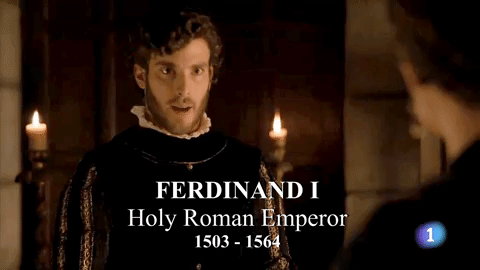
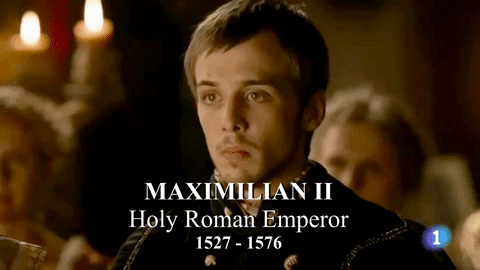

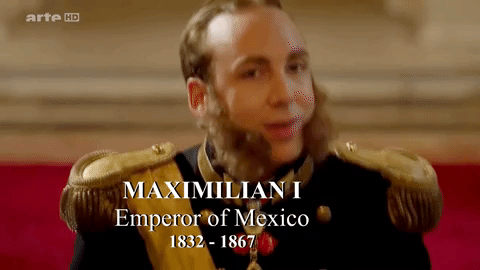

The House of Habsburg
The House of Habsburg was one of the most influential royal houses of Europe. At the height of its power, the dynasty ruled Austria, a vast tract of Central Europe, Spain, Sardinia, Sicily, Naples, the Low Countries, territories in Central-South America, and it occupied the throne of the Holy Roman Empire for nearly three centuries. Frederick III was the first emperor of the dynasty and Empress Maria Theresa was the only female ruler of the Habsburg dominions, but other women of this dynasty also stood out as regents of their adoptive countries or governors of the Netherlands.
The earliest traceable ancestor of the Habsburg dynasty was a Count Guntram “the Rich”, whose name first appears in records dating from the year 952. The family name is derived from that of their original castle, the Habichtsburg (Hawk’s Castle), built in 1020 by Werner, bishop of Strasbourg, and his brother-in-law, Count Radbot, in what is now the Aargau Canton of northern Switzerland. The first member of the family to bear the name was Count Werner I.
The Habsburgs held the arts in high regard. In the sixteenth century, the power and wealth of a dynasty were expressed through its patronage of art and science. Bella gerant alii, tu felix Austria nube – ‘Let others wage war: you, happy Austria, marry’. This famous saying is invariably quoted when the rise of the Habsburgs is put down to the success of their dynastic marriage policy, in which young archdukes and archduchesses were frequently married off as children to members of other dynasties, or indeed to relatives of their own. The Holy Roman Emperor Maximilian I is credited with the greatest success in the implementation of this policy, but the wars were an equally important element of Habsburg policy as marriages.
Charles V was Lord of an empire in which "the sun never sets". King Charles II was the last Habsburg ruler of Spain. Franz Joseph I was the longest-reigning Emperor of Austria and King of Hungary. His brother Maximilian was the only monarch of the Second Mexican Empire and he was executed by the Mexican government. The assassination of his nephew and heir Archduke Franz Ferdinand in Sarajevo led directly to the First World War. His grandnephew Charles I of Austria was the last ruler of the Austro-Hungarian Empire.
(x)(x)(x)
148 notes
·
View notes
Photo

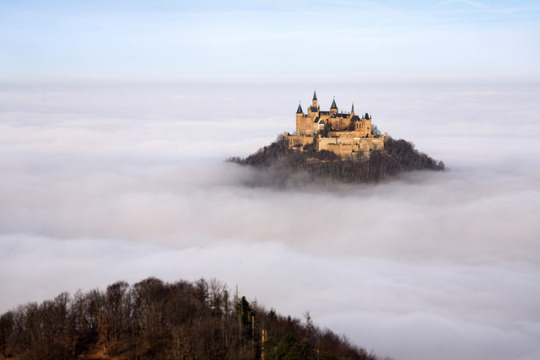

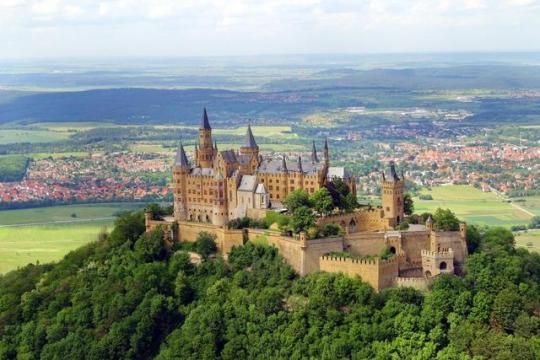

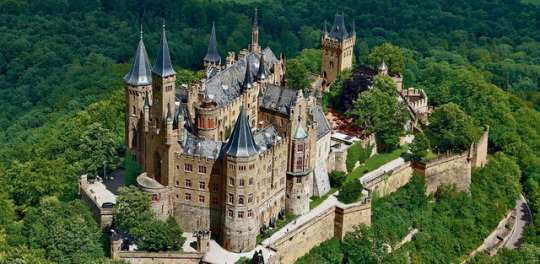
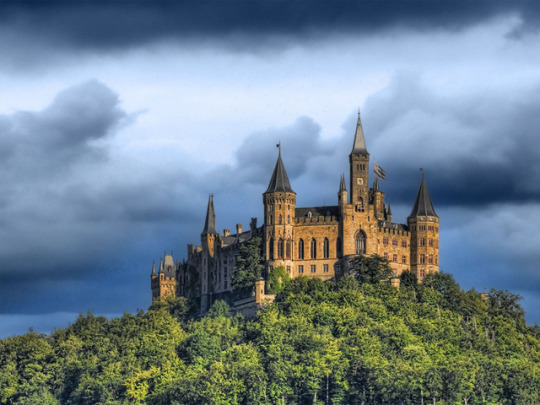

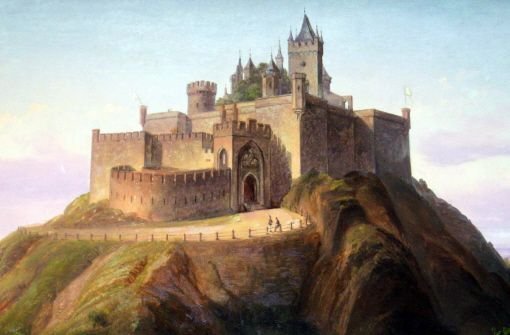
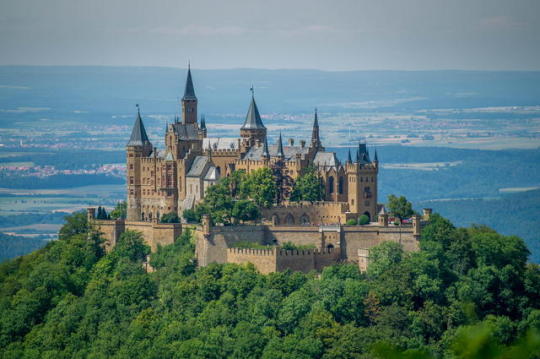
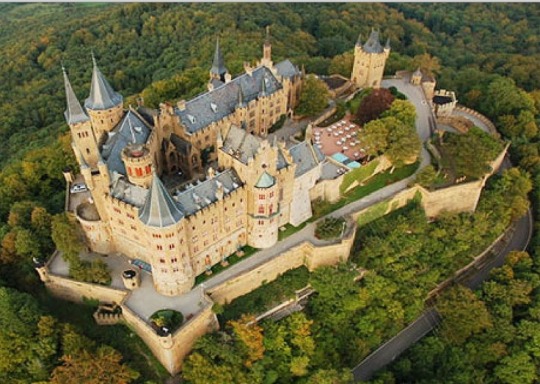



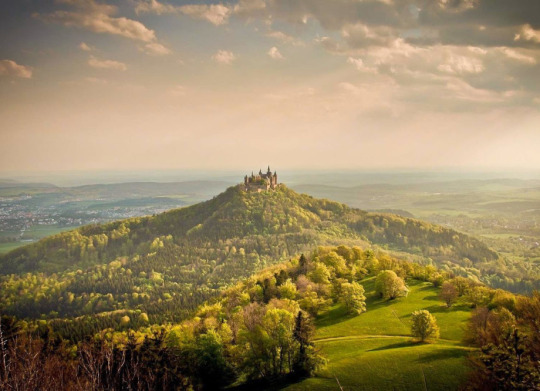






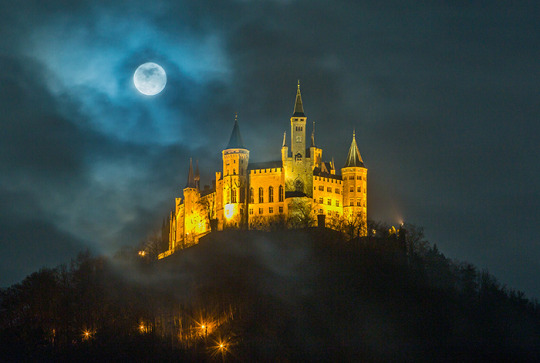

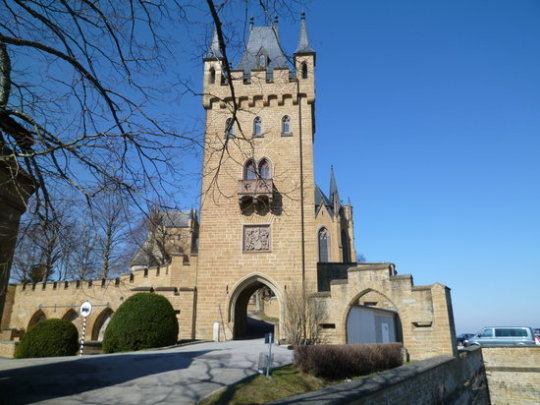
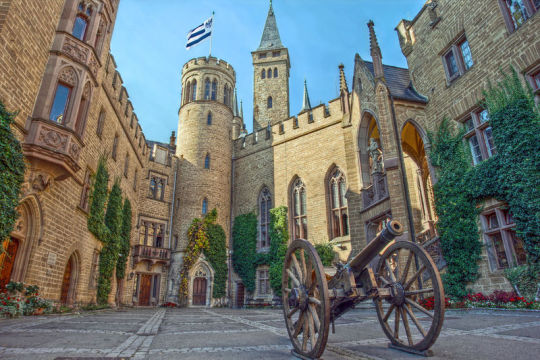
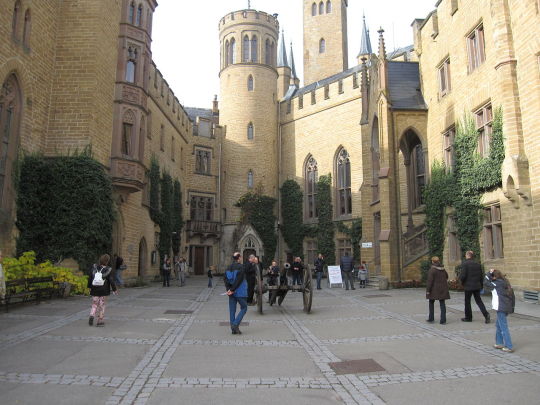
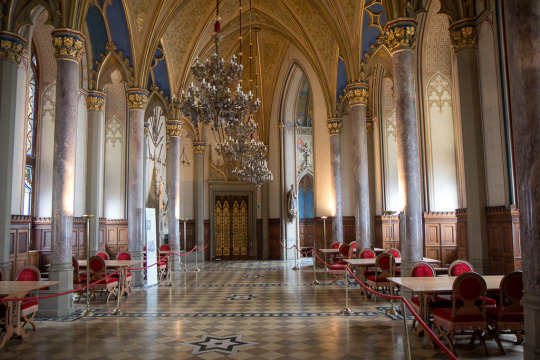

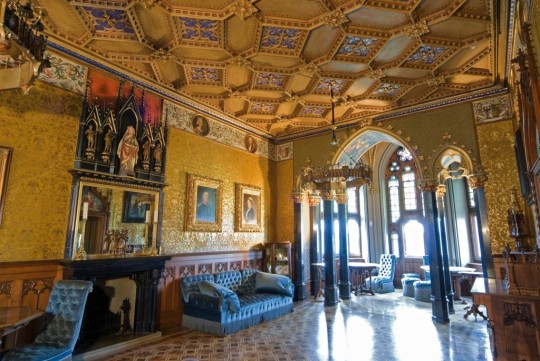


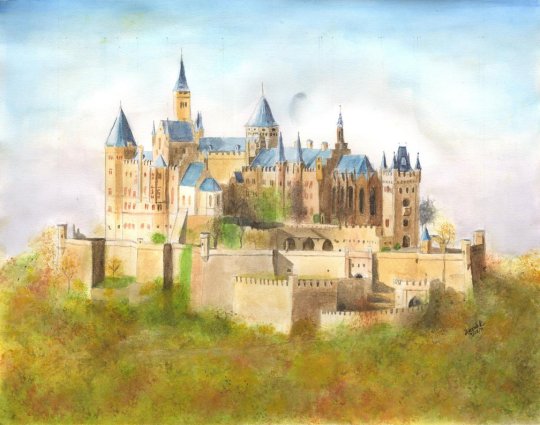

Hohenzollern Castle (German: Burg Hohenzollern is the ancestral seat of the imperial House of Hohenzollern. The third of three castles on the site, it is located atop Berg Hohenzollern, a 234-metre (768 ft) bluff rising above the towns of Hechingen and Bisingen in the foothills of the Swabian Alps of central Baden-Württemberg, Germany.
A popular tourist destination, Hohenzollern castle has over 300,000 visitors per year, making it one of the most visited castles in Germany.
The first fortress on the mountain was constructed in the early 11th century. Over the years the House of Hohenzollern split several times, but the castle remained in the Swabian branch, the dynastic seniors of the Franconian-Brandenburgian cadet branch that later acquired its own imperial throne. This castle was completely destroyed in 1423 after a ten-month siege by the free imperial cities of Swabia. A larger and sturdier structure was constructed from 1454 to 1461, which served as a refuge for the Catholic Swabian Hohenzollerns, including during the Thirty Years' War. By the end of the 18th century it was thought to have lost its strategic importance and gradually fell into disrepair, leading to the demolition of several dilapidated buildings. Today, only the medieval chapel remains.
The final castle was built between 1846 and 1867 as a family memorial by Hohenzollern scion King Frederick William IV of Prussia. Architect Friedrich August Stüler based his design on English Gothic Revival architecture and the Châteaux of the Loire Valley. No member of the Hohenzollern family was in permanent or regular residence when it was completed, and none of the three Deutsche Kaiser of the late 19th and early 20th century German Empire ever occupied the castle; in 1945 it briefly became the home of the former Crown Prince Wilhelm of Germany, son of the last Hohenzollern monarch, Kaiser Wilhelm II.
Among the historical artifacts of Prussian history contained in the castle are the Crown of Wilhelm II, some of the personal effects of King Frederick the Great, and a letter from US President George Washington thanking Hohenzollern descendant Baron von Steuben for his service in the American Revolutionary War.
The castle sits atop the 855 meters (2,805 ft) Berg Hohenzollern, an isolated 855 m (2,805 ft) promontory on the western side of the Swabian Alps. Located between Hechingen and Bisingen approximately 50 kilometers (31 mi) south of Stuttgart, the mountain lends its name to the local geographic region, der Zollernalbkreis, and is known among locals as Zollerberg (Zoller Mountain) or simply Zoller.
First castle:
Only written records exist of the original medieval castle of the House of Hohenzollern. While first mentioned in 1267, it appears to have dated back to the 11th century. Attacked in 1423, it was besieged for over a year by troops from the Swabian Free Imperial Cities before being taken and totally destroyed on 15 May 1423;
Second castle:
Construction on a second, stronger castle began in 1454. It was captured by Württemberg troops in 1634 midway in the Thirty Years' War (1618–1648), then fell under Habsburg control for about a century. During the War of the Austrian Succession (1740–1748) it was occupied in the winter of 1744/45 by French soldiers. Returned to Habsburg control after the war, it was rarely occupied and began to fall to ruin after the last Austrian owner left the castle in 1798. By the beginning of the 19th century only the Chapel of St. Michael remained usable;
Third castle:
The current castle was built by Hohenzollern scion Crown-Prince (and later King) Frederick William IV of Prussia. Traveling through southern Germany en route to Italy in 1819 he wished to learn about his family's roots, so climbed to the top of Mount Hohenzollern. He engaged Friedrich August Stüler, who had been appointed Architect of the King for the rebuilding of Stolzenfels Castle in 1842 while still a student and heir of Karl Friedrich Schinkel, to design a new castle. Stüler began work on an ornate design influenced by English Gothic Revival architecture and the Châteaux of the Loire Valley in 1846. The impressive entryway is the work of the Engineer-Officer Moritz Karl Ernst von Prittwitz, considered the leading fortifications engineer in Prussia. The sculptures around and inside the castle are the work of Gustav Willgohs. Like Neuschwanstein Castle in Bavaria, Hohenzollern Castle is a monument to German Romanticism which incorporated an idealized vision of a medieval knight's castle. Lacking some of the fantastic elements and excesses of Neuschwanstein, the castle's construction served to enhance the reputation of the Prussian Royal Family.
Construction began in 1850, and was funded entirely by the Brandenburg-Prussian and the Hohenzollern-Sigmaringen lines of the Hohenzollern family. Construction was completed on 3 October 1867, under Frederick William IV's brother King William I.
After the castle was rebuilt, it was not regularly occupied, but rather used primarily as a showpiece. None of the Hohenzollern Kaisers of the German Empire lived there; only the last Prussian Crown Prince William stayed for several months following his flight from Potsdam ahead of Soviet army forces during the closing months of World War II. He and his wife Crown Princess Cecilie are buried there, as the family's estates in Brandenburg had been occupied by the Soviet Union at the time of their passings.
The central courtyard
Since 1952, the castle has been filled with art and historical artifacts from the collections of the Hohenzollern family and the former Hohenzollern Museum in Schloss Monbijou. Two of the major pieces are the Crown of Wilhelm II and a uniform that belonged to King Frederick the Great. From 1952 until 1991 the caskets of Frederick Wilhelm I and Frederick the Great were in the chapel, but were moved back to Potsdam following German reunification in 1991.
The castle was damaged in an earthquake on 3 September 1978, and was under repair until the mid-1990′s.
With over 300,000 visitors per year Hohenzollern castle is one of the most visited castles in Germany. It is still privately owned, with two-thirds belonging to the Brandenburg-Prussian family line (presently Georg Friedrich, Prince of Prussia), and the balance by the Swabian (Karl Friedrich, Prince of Hohenzollern). Since 1954, the Princess Kira of Prussia Foundation has used it to provide a summer camp for needy children from Berlin.
The first personal related reference of the Hohenzollern House dates back to 1061 ("Wezil et Burchardus de Zolorin"). First direct mention of the Castle complex ("Castro Zolre") was in 1267. Appearance, size and furnishing of the original Castle are unknown, but presumably it was in the first decade of the 11th century. At that time it must have been a vast and artistically valuable furnished complex. Contemporary sources praised it as "Crown of all Castles in Swabia" and as "the most fortified House in Germany". However in 1423, the Castle was completely destroyed.
From 1454 the second Hohenzollern Castle was constructed bigger and even more fortified than before. Later, during the Thirty Years War, the Castle was converted into a fortress with repeatedly changing owners. Since the maintenance of the building was neglected, it dilapidated and turned into ruins at the beginning of the 19th century.
In 1819 Crown Prince Frederick William of Prussia decided to have the ancestral seat of the Hohenzollern House reconstructed. In 1844, being King Frederick William IV, he wrote in a letter: "The memories of the year 1819 are exceedingly dear to me and like a pleasant dream, it was especially the sunset we watched from one of the Castle bastions, ... now this adolescent dream turned into the wish to make the Hohenzollern Castle habitable again..."
From 1850 he put his long lasting dream into reality and created one of Germany’s most imposing Castle complexes in a neo-Gothic style. With its many towers and fortifications, it is an acclaimed masterpiece of military architecture in the 19th century. Additional civil architectural elements make it to a unique attraction. The location on the most beautiful mountain in Swabia, gives the Castle a picturesque appearance.
From 1952 Prince Louis Ferdinand of Prussia initiated to have the Castle furnished with valuable work of arts and historically significant hereditary pertaining to the history of Prussia and its Kings. In addition to paintings from renowned artists (Honthorst, Pesne, von Werner, von Lenbach and Laszlo), there is a display of gold- and silversmith works from the 17th to the 19th century.
In 1970 and in 1978 earthquakes caused immense damage to the Castle. Now and in the future all costs for maintenance, preservation and renovations have to be financed from the admission fees. The Castle complex presents itself to visitors from all over the world well maintained and in perfect structural condition.
0 notes